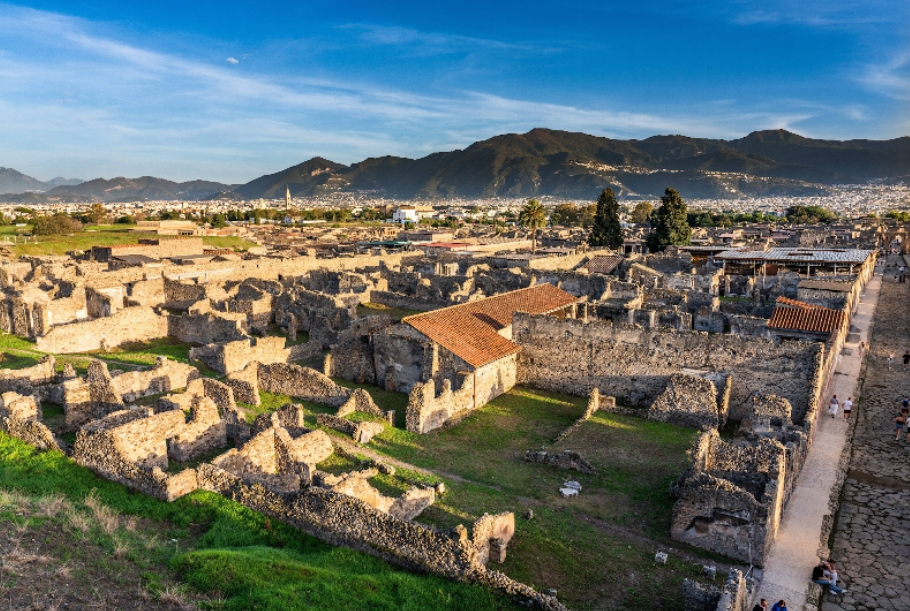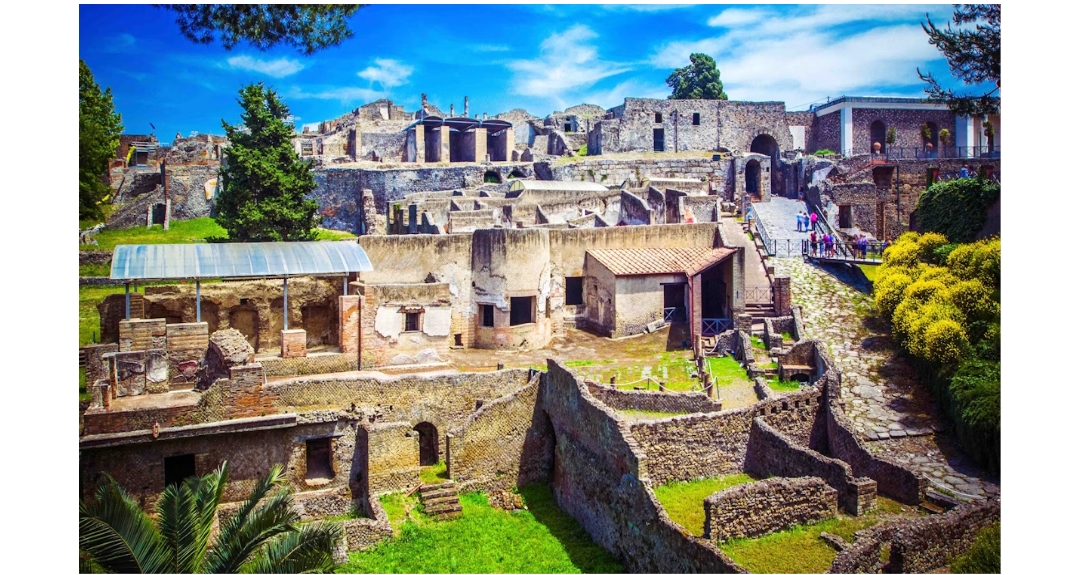Mount Vesuvius, the infamous volcano that looms over the Bay of Naples, is a destination that captivates travelers with its stunning views and rich history. Known for its catastrophic eruption in AD 79 that buried the cities of Pompeii and Herculaneum, Vesuvius offers a unique blend of natural beauty and historical significance. Private tours of Mount Vesuvius provide a personalized experience, allowing visitors to explore this iconic landmark in a way that suits their interests and preferences.
The Appeal of Private Tours
Private tours of Mount Vesuvius cater to a wide range of travelers, from history enthusiasts to nature lovers. Unlike group tours, private excursions offer the flexibility to customize the itinerary based on individual interests. Whether you want to focus on the geological aspects of the volcano, delve into its historical significance, or simply enjoy the breathtaking views, a private tour can be tailored to meet your needs. This personalized approach ensures a more enriching experience, allowing travelers to engage deeply with the site.
Exploring the Volcano’s History
One of the highlights of a private tour is the opportunity to learn about the history of Mount Vesuvius from knowledgeable guides. These experts provide insights into the volcano’s geological activity, its eruptions, and the impact on the surrounding communities. Visitors can explore the remnants of ancient settlements, such as Pompeii and Herculaneum, and understand how the eruption shaped the lives of the people who lived there. This historical context adds depth to the visit, making it more than just a scenic hike.
Scenic Hiking Trails
The hiking trails on Mount Vesuvius Tours offer stunning panoramic views of the Bay of Naples, the Amalfi Coast, and the surrounding countryside. Private tours often include guided hikes that allow travelers to explore the various trails at their own pace. Whether you are an experienced hiker or a casual walker, there are routes suitable for all fitness levels. The ascent to the crater is particularly rewarding, as visitors can peer into the volcanic caldera and witness the geological wonders up close.
Unique Experiences for Every Traveler
Private tours can be tailored to include unique experiences that cater to different interests. For example, food enthusiasts may opt for a tour that includes a tasting of local wines and traditional Neapolitan cuisine. Cooking classes featuring regional dishes can also be arranged, providing a hands-on experience that connects visitors to the local culture. Additionally, photography tours can be organized for those looking to capture the stunning landscapes and vibrant flora of the area.
Family-Friendly Adventures
Private tours of Mount Vesuvius are also ideal for families. With the ability to customize the itinerary, families can choose activities that are suitable for children, such as shorter hikes or interactive educational experiences. Many guides are experienced in working with families and can provide engaging stories and activities that keep children entertained while learning about the volcano’s history and geology. This family-friendly approach ensures that everyone has a memorable experience.
Safety and Comfort
Safety is a top priority during private tours of Mount Vesuvius. Guides are trained to navigate the trails and ensure that all participants are equipped with the necessary safety gear. Additionally, private tours often include transportation to and from the volcano, providing a comfortable and stress-free experience. This convenience allows travelers to focus on enjoying their adventure without worrying about logistics.
Eco-Friendly Tourism
Private tours of Mount Vesuvius also promote eco-friendly tourism practices. Many tour operators emphasize sustainable practices, such as minimizing waste and respecting the natural environment. By choosing a private tour, travelers can support local businesses that prioritize conservation efforts and contribute to the preservation of this iconic landscape for future generations.
Geological Tours of Mount Vesuvius: Discover the Science Behind the Eruption
Introduction to Mount Vesuvius
Mount Vesuvius, located on the Gulf of Naples in Italy, is one of the most famous and dangerous volcanoes in the world. Known for its catastrophic eruption in 79 AD that buried the cities of Pompeii and Herculaneum, Vesuvius is an active stratovolcano that continues to attract geological enthusiasts and tourists alike. Its unique geological features and historical significance make it a prime destination for geological tours, where visitors can learn about the science behind its eruptions.
The Geological Formation of Vesuvius
Vesuvius is part of the Campanian volcanic arc, formed by the subduction of the African tectonic plate beneath the Eurasian plate. This tectonic activity has created a complex geological landscape, with Vesuvius itself being a somma volcano. The current structure of Vesuvius is the result of the collapse of an ancient volcano, Mount Somma, around 17,000 years ago. The formation of the caldera and the subsequent growth of Vesuvius have resulted in its distinctive humpbacked shape, characterized by a large cone partially encircled by steep cliffs.
Eruptive History
The history of Vesuvius is marked by numerous eruptions, with at least three dozen recorded since the infamous eruption of 79 AD. These eruptions vary in intensity and style, with explosive eruptions being particularly notable. The most significant eruptions include those in 1631, the 1700s, and the most recent in 1944. Each eruption has contributed to the geological landscape and has had profound impacts on the surrounding communities, emphasizing the need for ongoing geological monitoring and research.
Understanding Volcanic Activity
The science behind volcanic eruptions is complex and involves the study of magma composition, gas content, and tectonic movements. Vesuvius is known for its “Plinian” eruptions, characterized by explosive outbursts that eject large volumes of ash and gas into the atmosphere. The magma beneath Vesuvius is rich in silica, which contributes to its viscosity and the potential for explosive eruptions. Understanding these processes is crucial for predicting future eruptions and mitigating risks for the millions of people living in the vicinity.
The Role of Geological Tours
Geological tours of Mount Vesuvius provide a unique opportunity for visitors to engage with the science of volcanology. These tours often include guided hikes to the summit, where participants can observe the crater and learn about the geological features of the area. Knowledgeable guides explain the history of the volcano, its eruptive patterns, and the ongoing research efforts to monitor its activity. Such tours not only educate participants about the geological processes at play but also raise awareness of the risks associated with living near an active volcano.
Safety and Preparedness
Given the potential hazards posed by Vesuvius, safety is a significant focus of geological tours. Tour operators work closely with local authorities to ensure that visitors are informed about safety protocols and emergency procedures. The region has developed comprehensive evacuation plans and monitoring systems to protect residents and tourists alike. Understanding these safety measures is an essential part of the geological tour experience, as it highlights the importance of preparedness in the face of natural disasters.
Conclusion: The Importance of Geological Education
Geological tours of Mount Vesuvius serve as a vital educational resource, fostering a deeper understanding of volcanic activity and its implications for society. By exploring the science behind eruptions, participants gain insight into the dynamic processes that shape our planet. As Vesuvius remains an active volcano, continued research and education are crucial for ensuring the safety of those living in its shadow. Embracing geological education not only enriches our knowledge but also empowers communities to respond effectively to the challenges posed by natural phenomena.






























